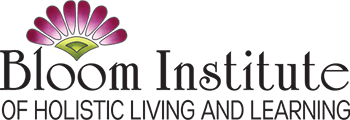Nothing was more wonderful than waiting for a happiness you could be sure of.
~ Barbara Kingsolver
Wonder-full is how I experience spring here in Nova Scotia, Nature’s great regeneration. Although still a week away on the calendar, the seasonal shift is already palpable. I sometimes hear complaints about our spring being “non-existent”, which I assume is in reference to the linger of winter rather than the arrival of spring. Yet, when we shift our sensibilities into subtle mode, we can experience a long, drawn-out spring transition.
Beginning in April with coltsfoot, followed by dandelion, plantain, chickweed, lady’s mantle, nettle, comfrey, mayflower, birch tips, mint, lemon balm, ground ivy, violet, hawthorn, and horsetail, to name a few, spring offers us a three-month parade of medicinal plants. This is more than enough to keep a wildcrafter/ herb grower busy; harvesting, drying and making medicinal preparations.
Even before the plants emerge from the soil, we can study the growth pattern of tree buds; it is fun to learn to identify local tree species by their buds and early growth. Many of our local trees are medicinal, their buds and sap collected in spring, leaf, flower and barks in summer and fall – maple, birch, oak, linden, mountain ash, alder, fir, spruce.
I have a process for welcoming the approaching harvest seasons, it is both practical and ritual. First, I take stock of my home and clinic apothecaries – what did I run out of, what will I need for the year ahead? What remains – and how should they be dealt with? Dry leaves and flowers lose their potency after a year, roots, barks and fruits are good for two years. I make the extra effort to use the remaining herbs, often in teas, or to give away. The left overs I include in the ritual I will explain later.
Then I refer to my harvest calendar from the year before as a reminder of when I can expect each herb to appear. Each plant has a particular window in which it is most medicinally potent or valuable. Most of the spring harvest is of leaves, which are best collected early, before stem and flower begin to form.
If you are a regular herb harvester, I recommend keeping a harvest journal each year in which you record the onset and completion of each plant’s phase of optimal harvest. This may vary slightly from year to year and in the different regions of the province or across the country, but it gives guidance for planning your busy harvest seasons. You can download a sample of a harvest journal here.
And then come the seeds! I order my herb seeds from Richter’s Seeds in Ontario, they specialize in medicinal herb, with over 1000 to choose from. Local seed companies carry some medicinal herb seeds – Annapolis Seeds, Hope Seeds, Yonder Hill Farm, Revival Seeds. I start my seeds indoors in April.
Next, I take delight in getting my harvest tools from storage; my gathering baskets and snippers. I make an altar in honour of spring, on which I place these, and other images and symbols of the season. On the Spring Equinox I light a candle and give thanks for herbs of harvests past, for winter medicines and for the herbs coming in the seasons ahead. I then take some of my left-over herbs to a special spot on my property and return them back to the earth, again with expressions of gratitude.
There are spring harvest festivals held all over the world; in India it is called Baisakhi, Jewish people celebrate Shavuot, in Pagan Europe the Spring equinox or Ostara in March and Beltane on May 1, in Madagascar the Santabary festival is celebrated in late April, another name for Chinese New Year is Spring Festival, they acknowledge the start of spring between January 21 and February 20. The Ute Indians of Colorado celebrate Spring with the Ute Bear Dance.
Symbols of spring appear in popular culture; Kokopelli is recognized in Native American cultures as a bringer of fertility to the land with the spring rains. Pagan symbols include eggs, bunnies, lambs, flowers, and baby chicks, most of which were eventually incorporated into Christian symbology. Animal symbols of spring include Canada Geese, groundhogs, robins, bears, storks and caterpillars, to name a few. In our part of the world, we celebrate spring with mayflowers, crocuses, daffodils and tulips.
What are your spring rituals? What ever they may be, may you find much hope and joy in anticipation of spring and all the blessings of the season.
